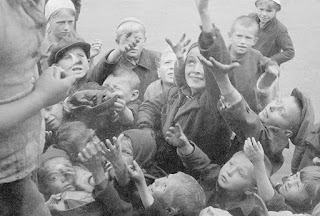Guide to Writing a Visual Essay
Although there is no fixed structure of a visual analysis, it should
definitely be entertaining. A visual essay centers on a certain piece of
artwork and must have an introduction followed by a series of linked
paragraphs, which comprise an essay body along with the concluding part.
Introduction
In this part, you should concisely tell about the picture you are going
to analyze, giving some background facts about the artist and importance
of this peculiar work. Do not forget to include other major details,
like dates and periods. Note that the introduction also entails a thesis
statement. Its type may vary depending on the type of assignment, the
aim, and the context. If you feel there are some issues when creating a thesis statement, read various
free papers and essays in educational sources or ask your professor to help you come up with an idea. For instance, a historical photo is an example of a
picture conveying a certain aim.
If you are analyzing a historical image, the introductory part may look as follows:
Images have often been used to call people’s attention to the dreadful
realities that require public assistance. A classic example is a
Fridtjof Nansen’s photo that portrays Russian famine. The aim of this
image is to collect money and reveal the effects of famine in Russia.
Particularly, the picture depicts two boys who feed each other, as their
hunger has become intolerable. The skeletal shapes embody the need for
urgent actions.
Thesis Formulation
A thesis conveys the meaning of the photo: "The image, originally used
for collecting money, was of utmost importance during Russian famine.
Moreover, it has a current mission, which is to remind people of dire
famine consequences".
Body Paragraphs
To write a good analysis statement, you must focus on significant image
elements. Specifically, each body paragraph must be dedicated to a
particular element, like the color, the image, and the text. It
traditionally begins with a topic sentence highlighting the importance
of the photo. In this part, you also need to put forward conclusive
evidence and explanations to support your argument. When dissecting the
image, imagine you are presenting it to somebody who has never seen it.
Thus, try to depict all important features in great detail in order to
convey a general picture effect.
Follow the Example:
The painting The last voyage by Soto depicts an isolated land akin to
earth. This artwork displays the connection between the environment and
humanity. In the foreground, there is a ship deserted in a polluted
area. The bottom of the painting is gray, whereas the sky is blue and
green. The circles and spiral graffiti create the illusion of a polluted
land. The black steam of the ship signifies people’s struggle in their
routine.
Conclusion
An effective conclusion sums up the theme and restates the thesis by
means of miscellaneous wordings. Additionally, you should provide new
ideas or suggestions that you developed while scrutinizing the picture.
Example of a Visual Analysis Conclusion
Although Soto’s painting is a real masterpiece representing the
relationship between human and nature, this artwork seems to condemn and
celebrate humanity simultaneously. Owing to the fusion of dark
graffiti, he displays the imagery of destruction. By means of cartoon
pictures, graffiti, and realistic imagery, it is easier to comprehend
the dynamic relationship between mankind and the environment.


Комментариев нет:
Отправить комментарий